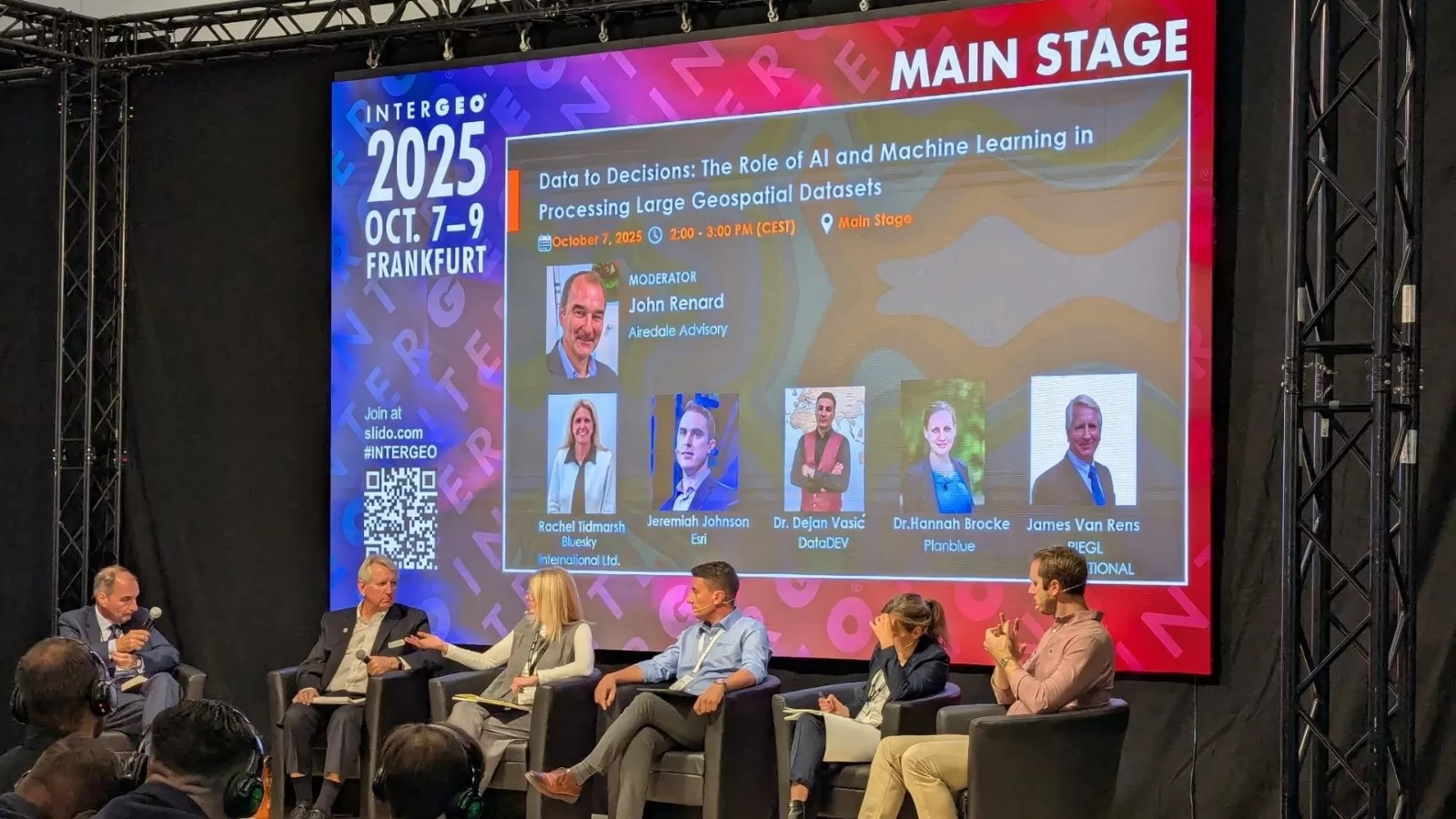
I recently had the pleasure of joining a panel at Intergeo, where we explored “Data to Decisions: The Role of AI and Machine Learning in Transforming Large Datasets into Actionable Insights for Better Governance.” It’s a topic that continues to sit firmly at the forefront of my mind, and for good reason.
There’s no doubt that AI and machine learning are transforming our industry. The scale, speed, and sophistication of these technologies are unlike anything we’ve seen before. Change can sometimes feel daunting, but in truth, it’s also an incredible opportunity. We’ve always adapted to new ways of working, and AI represents the next evolution, one that’s already reshaping how we think about data and decision-making.
For our customers, AI opens doors that were once closed by time or cost constraints. It allows them to create new products and solutions that were previously impractical or uneconomical to deliver. The same applies internally. By using AI to analyse and interpret the aerial survey data we collect, we can now extract insights on everything from road markings and roof types to tree species and street furniture, all at a scale and level of precision that was once unimaginable.
From a business perspective, AI enhances efficiency and scalability. It helps us process and deliver data faster, streamline workflows, and ultimately provide greater value to our customers. A great example is our recently launched Change Detection Service, which allows users to monitor and understand how landscapes evolve over time, offering real, actionable intelligence to support decision-making.

At Bluesky, our strength lies in the fact that we own the intellectual property (IP) in our data. By capturing and managing our own datasets, we can develop derived products that directly serve our customers’ specific needs. This ownership is not just a business advantage; it’s a foundation for trust. When we know the provenance of our data, we can stand behind its integrity, accuracy, and reliability.
We should also remember that, as seamless as AI may appear, it is not without its limitations and challenges. In some cases, manual interpretation of data remains necessary with regular human checks essential to ensure outputs are truly fit for purpose. AI systems are only as good as the data and guidance we provide. Without the right level of input and sufficiently extensive training datasets, even the most advanced algorithms will fall short. That’s why skilled people remain at the heart of this process; to design, train, and continually refine models, and to operate a rigorous quality control function that validates what the machines produce.
And this, I believe, is where caution is still essential. In a world where AI systems learn and make inferences based on the information we feed them, the quality and provenance of that information become paramount. If the data is flawed, biased, or is not quality checked the insights derived from it can be inaccurate and misleading.
One thing is for sure there’s no turning back the AI clock, so, as we embrace all that AI and machine learning have to offer, we must do so with both enthusiasm and responsibility. The potential is enormous, but it’s built on a simple truth: great insights come from great data, and great data comes from expertly acquired capture, processing and quality control that have been led and developed by highly-trained individuals.





